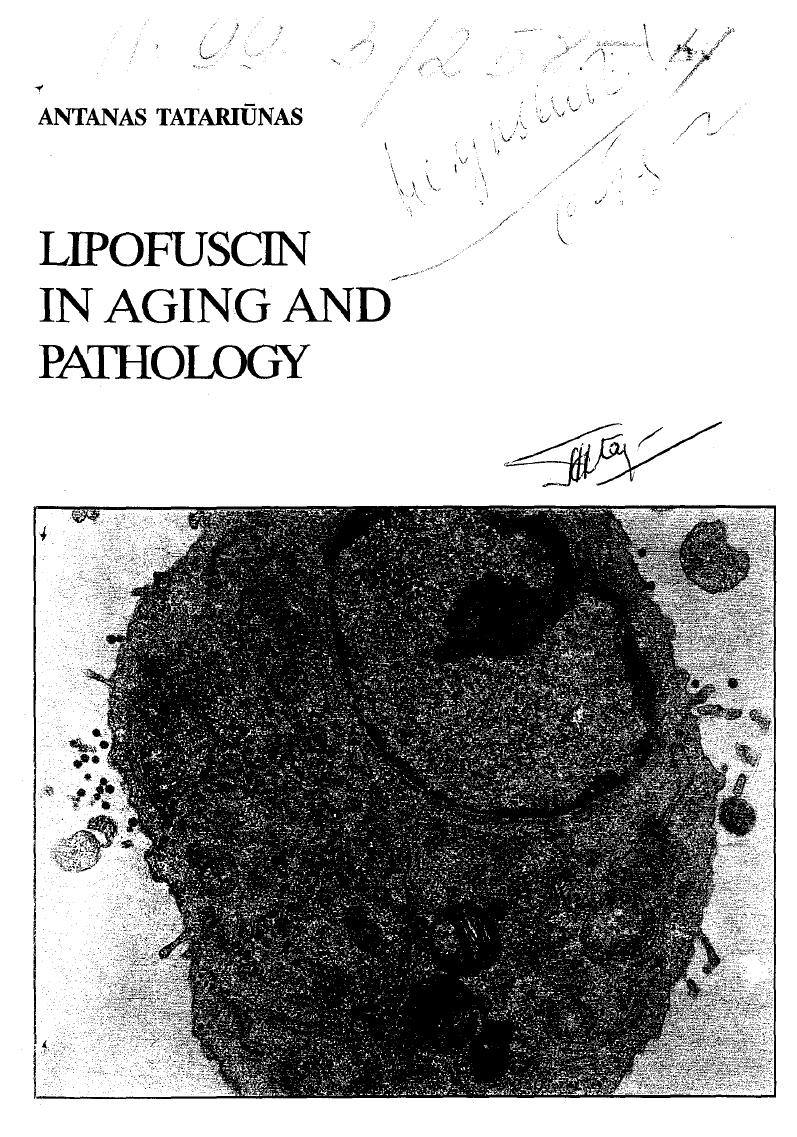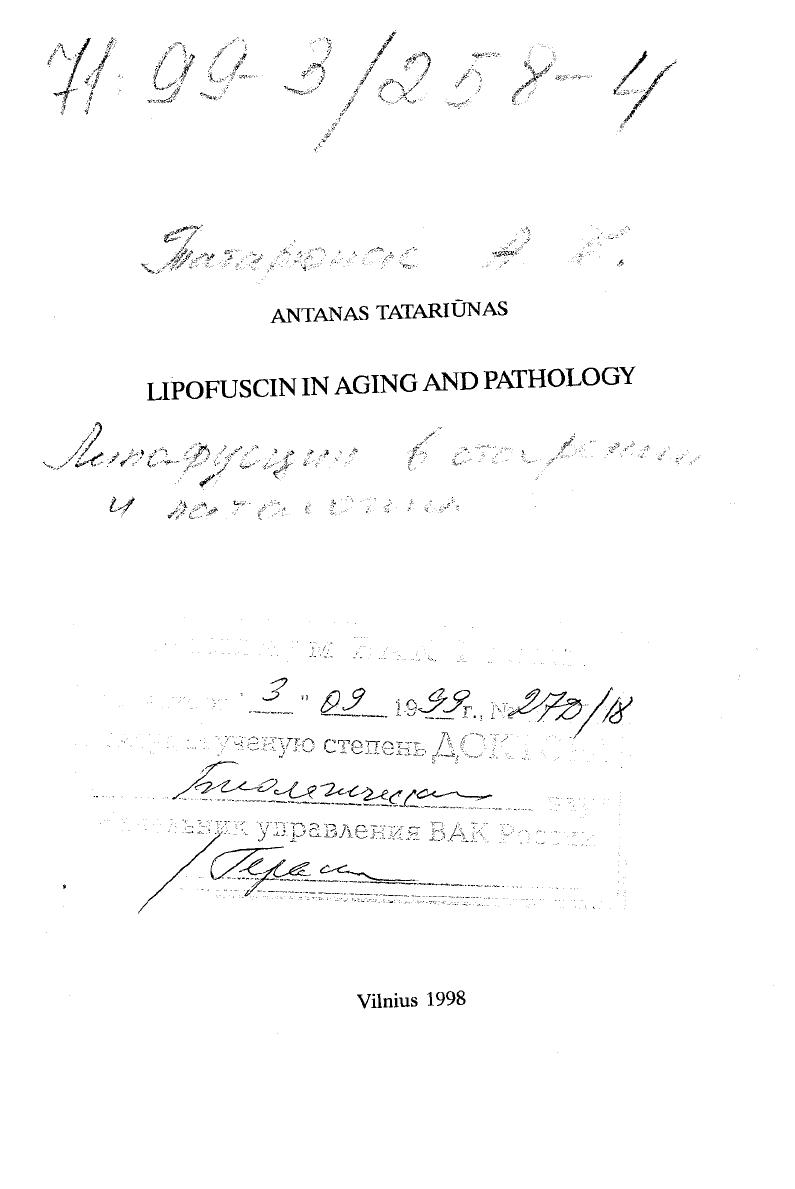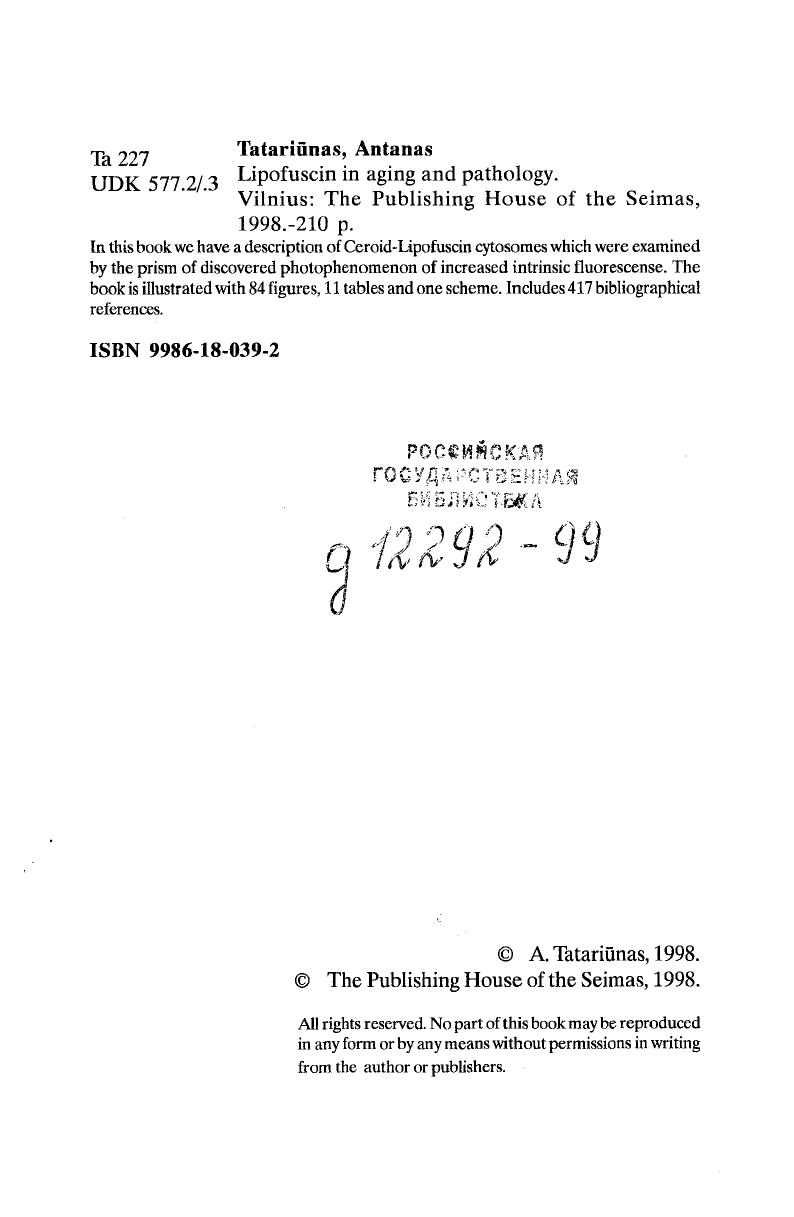Липофусцин в старении и патологии

- Автор:
Татарюнас, Антанас Бернардович
- Шифр специальности:
03.00.02
- Научная степень:
Докторская
- Год защиты:
1998
- Место защиты:
Вильнюс
- Количество страниц:
210 с. : ил.; 21х15 см
Стоимость:
700 р.250 руб.
до окончания действия скидки
00
00
00
00
+
Наш сайт выгодно отличается тем что при покупке, кроме PDF версии Вы в подарок получаете работу преобразованную в WORD - документ и это предоставляет качественно другие возможности при работе с документом
Страницы оглавления работы


Рекомендуемые диссертации данного раздела
| Название работы | Автор | Дата защиты |
|---|---|---|
| Эффект радиационной стимуляции при действии больших и малых доз ионизирующего облучения на биологические объекты | Ивановский, Юрий Александрович | 2006 |
| Увеличение разрешающей способности фотометрического метода регистрации агглютинации эритроцитов человека in vitro | Дворецкий, Константин Николаевич | 2005 |
| Особенности организации и моделирования произвольных и непроизвольных движений учащихся Севера РФ | Майстренко, Елена Викторовна | 2006 |